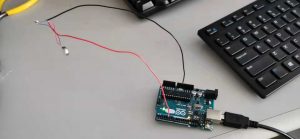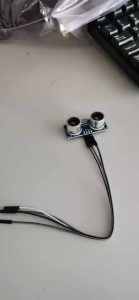This week, we reviewed our design process, and tested on an order of items that we received. The main progress includes the following:
Through talking to professor Gary and TA Joseph, we have added the use of arduino uno into our project. We will be using the arduino board to control both the ultrasonic sensors and the vibration motor disks. The updated design can be seen in the design review presentation, in which we will provide a detailed design on what our block diagram is now.
We have been able to test with both a single ultrasonic sensor and a single vibration motor disk with the arduino. We have found that the sensor we have purchased seems to work best within a 4 meter range. We did some real life testing with walking obstacles, and concluded that 4 meters is a reasonable range for our product. The vibration disks can operate from 2.2v to 3.8 volts, providing different levels of vibration. We tested with 3 levels of vibration using PWM pins on the arduino board, and we can make clear distinctions between the different levels of feedback. We therefore believe that this is enough for our users to receive different information on the level of threat present.


Setting up the main OS and testing the raspberry pi4. We were able to install the raspberry pi OS and test out its basic functionalities, mostly revolving around building python scripts needed. We also tested the serial communication between the raspberry pi and arduino. On a side note, when we were working with the raspberry pi4 in lab 1304, we were unable to properly connect the device to open network using CMU or CMU-DEVICE. For some reason, the internet always redirects us to the CMU-IT service network and we can’t navigate to outside networks such as google or Github, next week we will try to set up the environment with a home wifi instead.

We also did some basic video processing test with the OAK-D camera to see that it operates correctly. Ning Cao have been looking through the documentation to find out how we can best use the existing camera modules and processing power to our benefit
Overall, we have been focused on a proof of concept test this week to make sure that we have chosen the correct components and our general design idea can be achieved with what we have. We are in schedule as we have finished most of our setups and unit testing according to plan. Next week, we will be mainly working in three areas: sensor and vibration disk control with arduino(Xiaoran), raspberry pi integration(Kelton), OAK-D camera integration(Ning). Our individual reports will further illustrate our plans.



